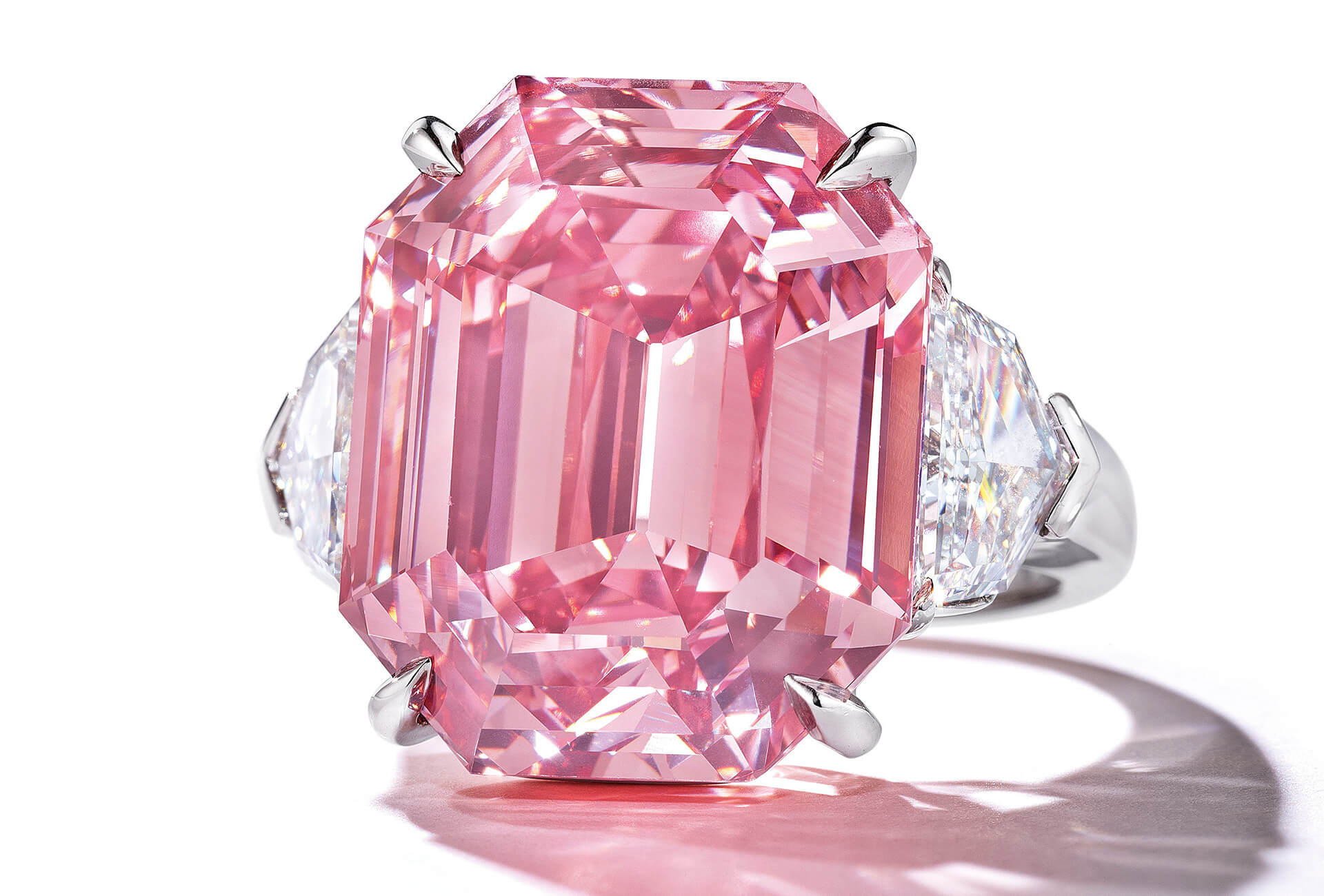Last November 13th, diamond traders had their eyes riveted on Geneva and the sale, by Christie’s, of the Pink Legacy — a rare fancy vivid pink diamond weighing 18.96 carats, formerly owned by the South-African Oppenheim family who for decades ran the De Beers mining company. As expected, this spectacular stone was hammered down at an astounding CHF 50.3 million ($50 million). Its new owner is Harry Winston, the American jeweller that is part of Swatch Group. The Pink Legacy joins a suite of record-breaking diamonds to have crossed the block in Geneva, including the Oppenheimer Blue (sold for $51.3 million in 2016) and the Blue Moon ($48.5 million in 2015). Gem-quality diamonds are prized for many reasons, whether as an investment that will hold its value or a promise of everlasting love, as part of nature’s bounty or for the skill required to transform the rough into a magnificent cut stone. The flipside being the controversy surrounding extraction methods and the use of “blood diamonds” to finance conflicts. The Kimberley Process, a certification scheme aimed at preventing these conflict diamonds from entering the market, has gone a long way towards cleaning up the supply chain, but can it suffice?
A growing market
The 250 tons of ore and 500 litres of water required to produce a single carat (0.20 gram) of cut diamond don’t tally with the environmental and sustainability criteria that today’s most talked-about demographic, millennials, expect from the brands they buy, particularly when put into the perspective of the 130 million carats of rough diamonds extracted each year, around 20% of which will end up as luxury goods. Then there is the matter of traceability that continues to fuel debate. Which is where synthetic diamonds come in. Compared with natural diamonds they have no inclusions, meaning they are purer, are potentially carbon neutral hence environmentally sustainable, are ethical because they are grown in labs, and are significantly more affordable, as De Beers recently demonstrated. The world’s biggest diamond mining company sent the jewellery industry into a flurry in September when it announced the launch of Lightbox, a brand that sells only laboratory-grown diamond jewellery. The South-African giant has been producing this type of stone for a number of years already at its Element Six company, but only for use by industry. Lightbox’s debut sends a clear signal to the jewellery market, with prices that will no doubt set the benchmark. Customers who order their jewellery on the Lightbox website, which currently ships to the United States, the biggest market for diamonds, will pay $800 per carat. That’s ten times less than natural diamonds and five times less than the competition.
And competition there is. While gem-quality synthetic diamonds still account for just a tiny 3% of the 130 million carats produced each year, the market is growing at an impressive rate. From 350,000 carats in 2014, production climbed to 4.2 million carats two years later and is continuing on this same upward trajectory. One of the companies in this fast-expanding sector is Diamond Foundry (actor Leonardo DiCaprio, a staunch supporter of environmental causes, is among investors in the California start-up). Closer to watchmaking countries, newcomer Courbet is a French firm that sells on its ecommerce site and at its outlet on Place Vendôme in Pars, a cluster of the most prestigious names in jewellery; in Switzerland, LakeDiamond was set up two years ago as a spinoff of the Swiss Federal Institute of Technology (EPFL) in Lausanne. It specialises in growing ultra-pure diamonds with a higher added value than gem-quality synthetic stones, that require more advanced production techniques. As part of its research, it has refined reactive ion etching technology to cut synthetic diamond into micromechanical systems for watch movements. Diamond’s very low friction would mean a significantly longer power reserve. Other advantages for watchmaking are that diamond is translucid and can be coloured, and is non-magnetic.
A CHF 20 billion market
The technology developed by LakeDiamond — whose Chief Executive, Pascal Gallo, is also at the head of Florimont, a company which launched this year, also in Lausanne, and creates High Jewellery from man-made diamonds — is so promising that it has made an initial coin offering of CHF 60 million to fund its development through the issue of digital tokens, mediated by online bank Swissquote. It’s a clear indication that the market for synthetic diamonds has huge potential; experts estimate it will be worth around CHF 20 billion within the next four years, knowing that a lab-grown, gem-quality diamond has the same optical, physical and chemical properties as a natural diamond. Only origin and age differ. Some fear these similarities will lead to a flood of man-made stones passed off as natural mined diamonds, which form over billions of years, hundreds of kilometres below the Earth’s crust. Which brings us back to the importance of traceability and the need for a suitable regulatory framework that will govern this expanding “ethical” business.













